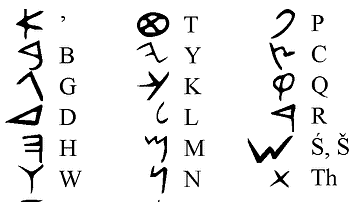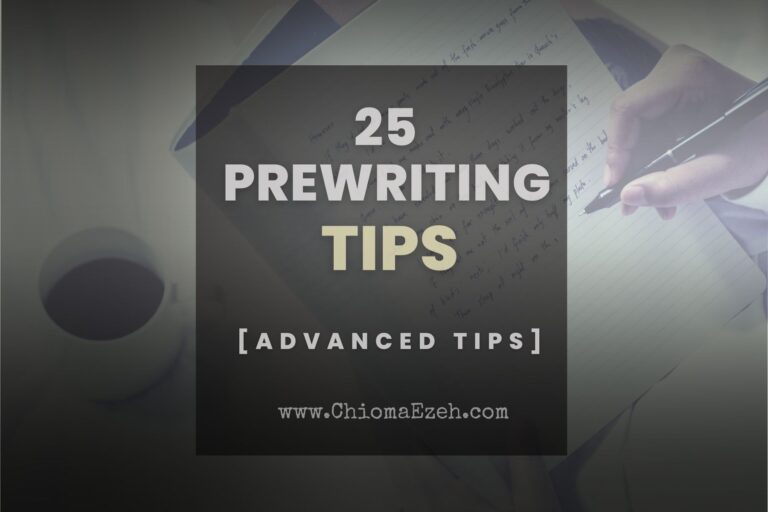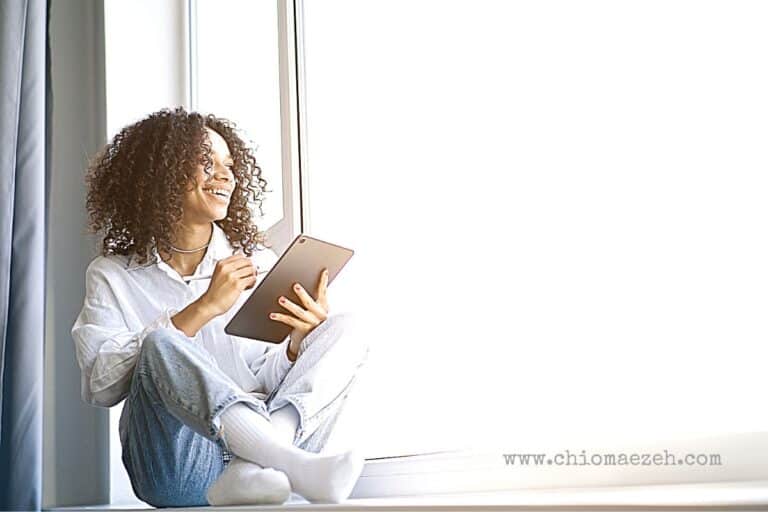History Of Writing: Timeline, Utensils, and Evolution
Chioma Ezeh is supported by its audience. When you purchase through links on our site, we may earn an affiliate commission at no extra cost to you. As an Amazon Associate, we earn from qualifying purchases. Learn more
Chioma Ezeh is supported by its audience. When you purchase through links on our site, we may earn an affiliate commission at no extra cost to you. As an Amazon Associate, we earn from qualifying purchases. Learn more
Writing is a form of communication that has been used since the beginning of civilization. It is essential for expressing ideas, conveying information, and recording events. Writing has evolved over time to become one of history’s most powerful forms of communication.
From ancient hieroglyphs carved into stone walls to modern texts sent via text messages, writing has changed dramatically throughout its long history. But how has writing evolved? What is the history of writing? What purpose does it serve? And how do different types of writing differ from each other?
This article will explore these questions and more as we investigate the definition, history, and evolution of writing.
👉 If you need help deciding the best tools for you, see our guide on best writing tools for writers.

Let’s Talk
Are you a writer aspiring to pen a masterpiece that never fails to captivate? Look no further. Reach out to us and uncover how we can help you to take your writing to unprecedented heights!

What Is Writing?
Writing is a way of representing language through symbols or marks that represent spoken words. The marks may be made on paper, clay tablets, stone walls, or any other surface that can hold them.
Writing allows us to express our thoughts in a way others can understand. It allows for communication between people who may not be able to interact directly with each other, such as across time and distance.
Writing is also an important tool for preserving information and knowledge over time. It is one of the primary means of communication used by humans.
👉 See our overview guide to writing, including definition, types, examples and more
History of Writing Timeline
The history of writing is long and complex, with evidence of the earliest writing systems appearing in Mesopotamia around 3200 BC. Over time, different writing styles and techniques have been developed worldwide. Here are some major milestones in the development of writing.
Here’s a table representation of the timeline for the history of writing with a comprehensive view:
Table: Timeline of History Of Writing
| Time Period | Date Range | Writing System/Event | Example | Description |
|---|---|---|---|---|
| Prehistoric | 40,000 – 5,000 BC | Pictographs and Petroglyphs | Cave paintings in Lascaux, France | Early humans created paintings and carvings on cave walls and rocks to depict stories and events. |
| Ancient | 3500 – 3000 BC | Cuneiform script | 𒂗𒆠 (“lugal” – Sumerian for “king”) | The first known form of written language used wedge-shaped marks on clay tablets. |
| Ancient | 3200 – 600 BC | Egyptian Hieroglyphs | 𓇳𓆣𓁿 (“ankh” – Egyptian symbol for “life”) | A writing system using pictorial symbols to represent words or sounds. |
| Ancient | 2000 – 1000 BC | Phoenician Alphabet | 𐤃𐤁𐤓 (“bar” – Phoenician for “son”) | A script consisting of 22 letters, which became the basis for the Greek and Latin alphabets. |
| Ancient | 1000 – 500 BC | Aramaic Writing System | בר (“bar” – Aramaic for “son”) | A writing system derived from Phoenician and widely used in the ancient Near East. |
| Ancient | 800 – 400 BC | Chinese Writing System | 马 (“mǎ” – Chinese for “horse”) | A logographic writing system with thousands of characters representing words or morphemes. |
| Classical | 500 BC – 400 AD | Greek Alphabet | Δαυίδ (“Davíd” – Greek for “David”) | An alphabet derived from the Phoenician script and used for writing the Greek language. |
| Early Medieval | 400 – 600 AD | Runes | ᚠᚢᚦᚨᚱᚲ (“Futhark”) | A set of alphabetic symbols used by various Germanic peoples for writing in their languages. |
| Early Medieval | 600 – 1000 AD | Arabic Script | بسم (“bism” – Arabic for “in the name”) | A script used for writing the Arabic language and adapted for other languages as well. |
| Medieval | 800 AD – present | Latin Alphabet | Ave Maria | An alphabet adapted from the Greek and Etruscan scripts and used for writing Western languages. |
| Modern | 1450 | Gutenberg’s Printing Press | The Gutenberg Bible | A revolutionary invention that allowed for the mass production of printed materials. |
| Modern | 1868 – 1950s | Typewriters | QWERTY keyboard layout | A mechanical device used to write text on paper, featuring a keyboard with individual keys. |
| Modern | 1980s – present | Personal Computers | Microsoft Word | Digital devices used for writing, editing, and storing text electronically. |
| Modern | 1980s – present | Internet and Digital Writing | Email, blogs, social media | Online platforms enabling instant communication and sharing of text-based content. |
| Modern | 1990s – present | Smartphones and Mobile Devices | Text messaging, note-taking apps | Handheld devices with touchscreens and keyboards used for writing, editing, and sharing text. |
| Modern | 2000s – present | Voice Recognition Technology | Siri, Google Assistant | Software that converts spoken language into written text, enabling hands-free communication. |
| Modern | 2010s – present | Virtual and Augmented Reality | VR/AR writing and editing tools | Immersive technologies used for writing and editing text in a virtual or augmented environment. |
| Modern | 2020s – present | Artificial Intelligence | Chatbots, AI-generated content | Advanced computer programs that can understand, generate, and edit text autonomously. |
| Modern | 2020s – present | Brain-Computer Interfaces (BCI) | Neuralink, BCI-controlled text input | Technologies that enable direct communication between the human brain and digital devices. |
The History of Writing
Writing has been around for a long time, but how it evolved over the centuries is fascinating. The earliest evidence of writing dates back to the Mesopotamian civilization, around 3200 BC.
This early form of communication was called cuneiform and consisted of marks made with a reed stylus on damp clay tablets. The Sumerians were the first to develop this form of writing, which eventually spread throughout the Ancient Near East.
Prehistioric and Ancient History
Prehistoric (40,000 – 5,000 BC) – Pictographs and Petroglyphs
In prehistoric times, early humans used paintings and carvings on cave walls and rocks to depict stories and events. These were often simple images or symbols representing objects, animals, or people.
Example: Cave paintings in Lascaux, France

Ancient (3,500 – 3,000 BC) – Cuneiform script in Mesopotamia
Cuneiform script was one of the earliest known writing systems, used by the ancient Sumerians. It involved making wedge-shaped marks on clay tablets with a reed stylus.
Example: [𒂗𒆠] (“lugal” – Sumerian for “king”)
Ancient (3,200 – 600 BC) – Egyptian Hieroglyphs
Hieroglyphs were a system of writing that used symbols and pictures to represent words or sounds. They were used for religious and official purposes in ancient Egypt.
Example: [𓇳𓆣𓁿] (“ankh” – Egyptian symbol for “life”)
Ancient (2,000 – 1,000 BC) – Phoenician Alphabet
The Phoenician alphabet was an early phonetic writing system that used a set of 22 characters to represent sounds. It influenced the development of later alphabets, including Greek and Latin.
Example: [𐤃𐤁𐤓] (“bar” – Phoenician for “son”)
Ancient (1,000 – 500 BC) – Aramaic Writing System
The Aramaic writing system was adopted by the Assyrians and Babylonians and was widely used in the Near East. It evolved from the Phoenician alphabet and influenced the development of Hebrew and Arabic scripts.
Example: [בר] (“bar” – Aramaic for “son”)
Ancient (800 – 400 BC) – Chinese Writing System
The Chinese writing system is one of the oldest and most complex writing systems still in use today. It is based on logograms, which are symbols that represent words or meaningful units of language.
Example: [马] (“mǎ” – Chinese for “horse”)
Classical And Medieval Era
Classical (500 BC – 400 AD) – Greek Alphabet
The Greek alphabet was derived from the Phoenician alphabet and influenced the development of the Latin and Cyrillic scripts. It is still used today for writing the Greek language.
Example: [Δαυίδ] (“Davíd” – Greek for “David”)
Early Medieval (400 – 600 AD) – Runes
Runes were a writing system used by Germanic peoples, such as the Vikings. They were typically carved into stone, wood, or metal objects and had both practical and magical uses.
Example: [ᚠᚢᚦᚨᚱᚲ] (“Futhark” – The first six letters of the Elder Futhark runic alphabet)
Early Medieval (600 – 1,000 AD) – Arabic Script
The Arabic script was introduced to Europe with the expansion of Islam and influenced the development of other scripts, such as Persian and Urdu. It is still used today for writing Arabic and other languages.
Example: [بسم] (“bism” – Arabic for “in the name”)
Medieval (800 AD – present) – Latin Alphabet
The Latin alphabet, derived from the Greek alphabet, became the dominant writing system in Western Europe and is still used today for writing many languages, including English, Spanish, and French.
Example: [Ave Maria] (“Hail Mary” – A common Latin prayer)
The Modern Era
Modern (1440 AD) – Gutenberg’s Printing Press
The invention of the printing press revolutionized the distribution of books and the dissemination of ideas. It made it possible to produce multiple copies of a text, which allowed for the widespread distribution of knowledge.
Example: The Gutenberg Bible, one of the earliest printed books
Modern (1860 AD) – Typewriters
The typewriter enabled faster and more efficient writing, transforming business and personal correspondence. Early typewriters used a series of levers and keys to imprint characters onto paper.
Example: The QWERTY keyboard layout, still used today on computer keyboards
Modern (1970s – present) – Personal Computers and Word Processors
Personal computers and word processors revolutionized the way people write, edit, and store written content. They made it easy to format text, correct errors, and produce professional-looking documents.
Example: Microsoft Word, one of the most popular word processors
Modern (1980s – present) – The Internet and Digital Writing
The internet has had a profound impact on writing, communication, and the dissemination of information. It has enabled the sharing of text, images, and multimedia content globally, connecting people and ideas in ways never before possible.
Example: Email, blogs, and social media platforms like Facebook and Twitter
Modern (1990s – present) – Smartphones and Mobile Devices
The widespread use of smartphones and mobile devices has further revolutionized the way we write and communicate. With touchscreen keyboards and voice recognition, writing has become more accessible and convenient than ever before.
Example: Text messages, instant messaging apps like WhatsApp, and note-taking apps like Evernote
Modern (2000s – present) – Collaborative Writing and Cloud Storage
The development of cloud storage and collaborative writing tools has made it easier for multiple users to work on a single document simultaneously. These tools facilitate collaboration, information sharing, and real-time editing.
Example: Google Docs, Microsoft Office 365, and Dropbox Paper
Modern (2010s – present) – Artificial Intelligence and Writing Assistance
Artificial intelligence and machine learning have led to the creation of advanced writing assistance tools. These tools can help with grammar, punctuation, style, and even content generation, making it easier for writers to produce high-quality work.
Example: Grammarly, Hemingway Editor, and OpenAI’s GPT-3
The Evolution of Writing
Writing has changed significantly over time as new technologies have emerged and new ways of communication have been developed.
The First Written Word
The first written word was a pictogram representing an ox head on a clay tablet found in Mesopotamia in modern-day Iraq. This was around 5300 BCE, making it one of the oldest known forms of writing still in existence today.

The Sumerians
As time went on, more and more complex writing systems were developed. The Sumerians, who lived in southern Mesopotamia around 3200 BCE, developed cuneiform script, made up of wedge-shaped marks pressed into wet clay tablets with the ends of reeds or styluses made of wood or bone.
From Sumer, cuneiform writing spread to other civilizations like the Egyptians and Hittites. The Egyptians used hieroglyphs to record their history and beliefs, while the Hittites developed a syllabic writing system that was adapted from cuneiform.
The Egyptians
The Egyptians developed hieroglyphs around 3000 BCE; these symbols stood for sounds instead of words themselves—they were used to represent ideas rather than objects (which is why hieroglyphs aren’t considered true alphabets).

The Chinese

The Chinese, who invented paper around 105 A.D., used it for writing and making books and maps. The first known book made out of paper was “Chu Shih Chieh,” which means “Book of Rites.”
The Greeks

In Ancient Greece, there was a similar move towards alphabetic scripts rather than syllabic ones—this helped increase literacy rates among citizens and made it easier for people from different parts of Greece to communicate with each other despite having different dialects. This shift led to more widespread literacy and a greater focus on education for all citizens regardless of social standing or gender identity.
The First Printing Press

Johannes Gutenberg invented the printing press in 1440 CE. This allowed books to be mass-produced much more quickly than ever—and with much greater accuracy.
The Alphabetic Writing System

Another important timeline in the history of writing is where we see alphabetic writing systems develop out of pictographic ones like Egyptian hieroglyphics or Sumerian cuneiform.
Alphabetic writing systems are more efficient because they use fewer symbols than pictographic ones, which means they allow for faster communication and more complex information sharing through written texts like books or scrolls, etc.
In the 19th and 20th centuries, typewriters, computers, and other technologies made writing easier and faster. These advances allowed for the production of more texts in a shorter time than ever before.
The Age Of Digital Media
Today, writing is an integral part of our lives as we use it to communicate with one another via text messages, social media posts, emails, and more.

This timeline is the age of digital media. Digital media allows us to communicate faster than ever because we don’t have to wait for mail delivery, train tickets, etc. We can send a text message from anywhere or at any time.
Despite the changes in form and technology, writing remains one of history’s most important forms of communication.
Evolution of Writing Utensils
As societies evolved, so too did the tools used to express ourselves. From primitive markings to sophisticated digital technology, the evolution of writing utensils reflects the progress of human civilization.
Bones And Stones [Prehistoric]:
The earliest writing utensils were simple and crude, often utilizing natural resources like bones, stones, or sticks to make markings on cave walls, clay tablets, or papyrus scrolls. These rudimentary tools laid the foundation for more advanced writing systems and technologies.
The Quill Pen [6th Century]:
Around the 6th century, the quill pen became a significant advancement in writing technology. These pens were made from bird feathers and offered greater precision and control than their predecessors. The quill pen remained popular for scribes and scholars for over a thousand years.
The Pencil [16th Century]:
The pencil as we know it today was invented in the late 16th century, following the discovery of graphite deposits in England. By mixing graphite with clay, inventors created a durable, erasable writing tool that would become a staple in classrooms, offices, and homes worldwide.
The Fountain Pen [19th Century]:
The 19th century saw the development of the fountain pen, a sophisticated writing instrument with a replaceable ink reservoir and a metal nib. This new technology allowed for smoother, more consistent writing and quickly gained popularity among professionals and writers alike.
The Ballpoint Pen [20th Century]:
In the 1930s, the invention of the ballpoint pen marked another significant milestone in writing utensil evolution. Featuring a tiny ball bearing that releases ink onto the writing surface, the ballpoint pen offered a reliable, smudge-free writing experience that quickly made it the most popular writing tool in the world.
The Digital Age [21st Century to Present]:
With the advent of the digital era, writing utensils have continued to evolve. Digital styluses, for example, allow users to write or draw directly on electronic devices such as tablets and smartphones, blending traditional writing techniques with cutting-edge technology.
The evolution of writing utensils has not only transformed how we communicate but also shaped human history. As we continue to innovate and develop new technologies, it’s exciting to imagine what the future holds for these essential tools of expression.
Modern Writing Tools
Okay, let’s talk about modern writing tools. Today, there are quite a lot of modern writing tools and apps for the savvy modern writer. However, with the wide array of apps and devices available, choosing which is best for you can be hard.
To determine which device is right for you, consider what type of writing you will do most often and what features are important.
For example, a writing tablet may be best if you need a lightweight, portable device. A laptop or desktop might be better if you need more processing power. Also, depending on your writing needs, you may have to choose the best writing program that suits you.
👉 If you need help learning the best device for you, see our article on best writing apps for writers.
Video Recommendation: History of Writing
FAQs On the History And Evolution of Writing
What is writing?
Writing is the process of representing language in a visual or tactile form. It involves using symbols or signs to convey a message or meaning.
When was writing first developed?
Writing was first developed around 4000 BC in ancient Sumer, a region that is now part of modern-day Iraq. The Sumerians used a system of pictographs to represent objects and ideas.
What were the earliest writing systems?
The earliest writing systems were pictographic, meaning that they used pictures to represent words and ideas. Examples include the hieroglyphs of ancient Egypt, the cuneiform script of ancient Sumer, and the ideographic script of ancient China.
When did alphabetic writing emerge?
Alphabetic writing emerged around 2000 BC, when the Phoenicians developed a system of writing that used individual symbols to represent the sounds of their spoken language. This system eventually evolved into the Greek and Latin alphabets, which are still in use today.
How has writing evolved over time?
Writing has evolved from pictographic and ideographic systems to alphabetic systems. It has also gone through various technological advancements, such as the invention of the printing press, which made it easier and more efficient to produce written works. With the advent of computers and the internet, writing has become even more accessible and widespread.
How has writing impacted human civilization?
Writing has had a profound impact on human civilization, allowing for the recording and preservation of knowledge and information. It has also facilitated communication and the spread of ideas, leading to cultural and scientific advancements.
Final Notes On Writing, History, And Evolution
Writing is a powerful tool used since ancient times to communicate thoughts and ideas. It has evolved with new technologies and innovations, but it remains an essential part of our lives today. From hieroglyphs carved into stone walls to tweets sent instantly, writing has enabled us to share our stories with the world.
Now more than ever, the written word is essential in our lives—it helps us stay connected and informed during this unprecedented time. Writing offers an opportunity to express ourselves and amplify our voices beyond what any other form of communication can do.

![What Is First Person Point Of View? [Definition & Examples]](https://chiomaezeh.com/wp-content/uploads/2023/03/first-person-point-of-view-1-768x512.jpg)




